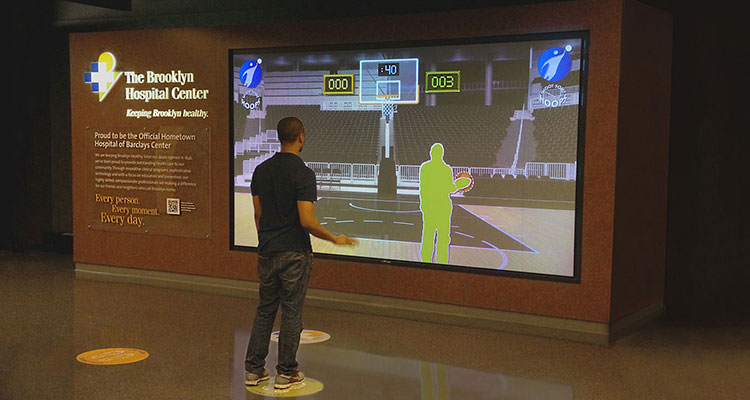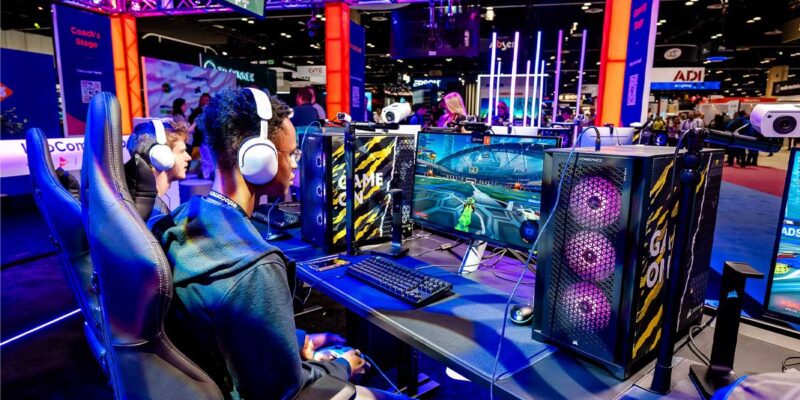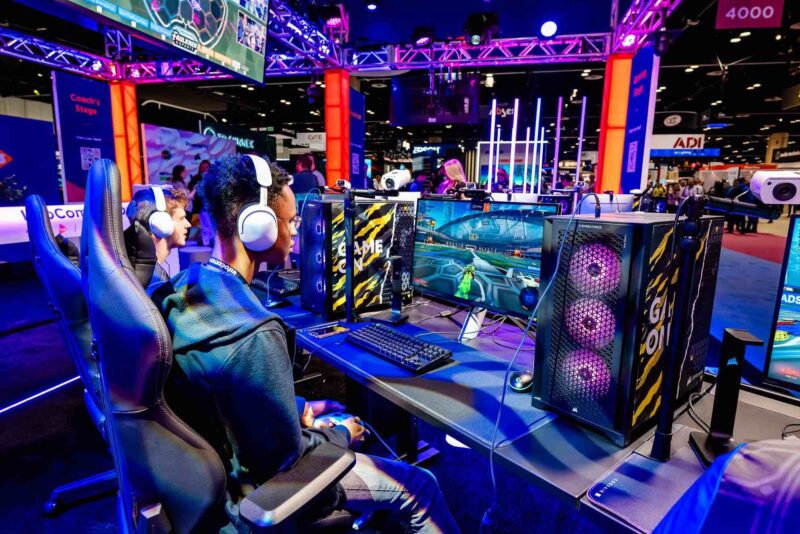The AV Experience
 “Experience” has been the big word in the industry as of late, even beyond the big change in our trade organization’s name to “Avixa” — the Audiovisual and Integrated Experience Association. Is this a buzzword, or should this represent a change in the way we design, and even how we think? It shouldn’t, because user experience should always be first in our thoughts.
“Experience” has been the big word in the industry as of late, even beyond the big change in our trade organization’s name to “Avixa” — the Audiovisual and Integrated Experience Association. Is this a buzzword, or should this represent a change in the way we design, and even how we think? It shouldn’t, because user experience should always be first in our thoughts.
So let’s talk about experience.
Today I’d like to discuss three spaces — last year’s word du jour in the humble huddle room, the flagship of conference spaces in the corporate board room, and, finally, the kinds of spaces created explicitly to communicate a message or story through a user experience.
Experience in the Huddle Room
The huddle space was a topic of one of our Sunday Morning Twitter conversations under the #AVinTheAM hashtag. While most people begin by describing huddle spaces by size, the more interesting discussion is in use case. Mark Coxon did a nice job with it:
In my interpretation, a huddle room is smaller (four to six people), has to be available ad hoc, needs to be flexible enough for a small group or a remote meetup, and needs tools for collaboration both near and far side.
Where Mark is right is that it’s about experience – in this case that experience being ease of use in impromptu, ad hoc meetings. This drives technology towards the simple and intuitive, with huddle spaces being ideal for no-touch control schemes; this should be the kind of space in which you sit down, connect your laptop and have the display turn itself on. Furniture should be durable, with enough clear workspace for whatever kind of devices or documents the users typically need to support small meetings.
The last part – regarding furniture – is one we in the AV design space often overlook. While it isn’t under our purview, it IS part of a successful design and one in which we need to be part of the discussion. Huddle room furniture needs to be welcoming, accessible, and stand up to whatever abuse it will be given. Those of us who work on the design phase of projects need to be able to discuss what furniture types fit what kinds of rooms or, at the very least, know what to expect and what changes we can ask for.
The Board Room Experience
This was another topic of Twitterversation was the corporate board room, often the flagship or crown-jewel of a conference room project. My definition of the board room is again based on expected experiences. If asked to give a single definition, I’d define it as follows:
The board room is an important room in which the furniture, technology, and space create a sense of importance. It is a space in which serious topics are discussed by people in positions of power.
While this is a very traditional view leaning towards certain industries (particularly law and finance), it is a good place to start. The traditional boardroom space is fit out in rich materials with furniture chosen for visual impact as well as functionality. This is a space, much more so than a huddle room space, in which integration of AV equipment with the aesthetics of the space is key.
What’s the technology experience here? Where the huddle room is built for utilitarian simplicity, the board room is built to impress. This is where large-format displays and well-tuned audio systems are chosen to make an impact on the audience. Simplicity is, in many cases, not the most important consideration as operation will more likely be by trained support staff than by end users. What’s most important in a space like this is that everything fits, that technology and space are seamless. This is the space in which one shouldn’t need to deal with cables lying across a table, in which technology should be sized to feel like an organic part of the design, not an afterthought.
Notice that much of what I see as “experience” in a boardroom has little to do with technology. Yes, user interfaces should be easy to use, but the most important audience is often not the one operating the system – it’s the people meeting in the space for which experience is more aesthetics than technology. Sometimes it’s the impact of an LED wall filling an entire side of the room, and sometimes it’s as simple as a clean table as the room is served with invisible technology – wireless keyboard/mouse combinations, wireless content sharing, discreet ceiling microphones.
Experience in Experience Centers
Finally, we get to the kinds of spaces with experience in their very names — interactive experience centers. What is an experience center? My working definition is in the form of an equation:
Typical AV space + Interaction + Story = Experience Center
 This is where a typical AV space can be anything from a showroom to a digital signage kiosk. The important thing – what sets it apart from an ordinary space – is that it has a story to tell and one which should be tailored to the specific audience. On simple example I saw was a series of meeting spaces for a corporate consulting firm. The content for the interactive video wall in the lobby included a series of survey questions about the business. Deeper inside in the meeting spaces, more interactive video walls allowed the clients to brainstorm strategies with the consultant. What makes it interesting is that the content from the survey would be automatically brought into the meeting, giving them a chance to compare their initial thoughts to the proposed solutions and see where there thinking may have changed and how well they were following their initial vision.
This is where a typical AV space can be anything from a showroom to a digital signage kiosk. The important thing – what sets it apart from an ordinary space – is that it has a story to tell and one which should be tailored to the specific audience. On simple example I saw was a series of meeting spaces for a corporate consulting firm. The content for the interactive video wall in the lobby included a series of survey questions about the business. Deeper inside in the meeting spaces, more interactive video walls allowed the clients to brainstorm strategies with the consultant. What makes it interesting is that the content from the survey would be automatically brought into the meeting, giving them a chance to compare their initial thoughts to the proposed solutions and see where there thinking may have changed and how well they were following their initial vision.
For another example, those of us in New York can see the Connected Worlds exhibit at the New York Hall of Science – a wonderful science museum near the former World Fair site at Flushing Meadows Park in Queens. Connected Worlds is a digital exhibit featuring various landscapes projected onto fixed screens while a digital river is projected onto the floor. Visitors can redirect the river with foam “logs” to bring life to various locales and wall-mounted cameras allow them to grow – or destroy – various plants with a gesture. The experience is explained via an animated digital book, also utilizing a camera and projector. Each run through the exhibit is unique based on the actions of those using it, and there is a subtle message about the sharing of scarce resources.
These simple examples illustrate two important concepts about designing for experience.
First, I’ll borrow a line from the standard presentation Blue Telescope – the design firm responsible for the above-mentioned system – gives to explain what they do.
We are not story tellers. We are story enablers.
Blue Telescope founder and CEO Trent Oliver goes on to explain that today’s world is built on interactivity, and younger generations are expected to be more than passive observers. To create an experience is to create the client’s individual experience, in finding ways to help them tell their stories.
Second, and perhaps most ominously for us, it isn’t about the technology. Design for customer-facing experience centers needs to begin at the very earliest phases with a vision. What is the message? How are users to interact with it?
What story are we helping to tell?
How?
These are questions I see too many of my fellow AV experts either leave until the end of a project or handwave into the “by others” bin. That’s natural – technology is what many of us do best and technology design is concrete. Native resolution, size and brightness of a display are all concrete numbers we can sharply define for a given space. Touch interactivity, audio input, camera input and similar connectivity can be easily defined in a spec. That’s hardware — and hardware is easy.
Just as one obviously doesn’t start building Connected Worlds by looking at hardware specs, one shouldn’t approach corporate experiences from that direction. Vision first. Story first. Then content, and hardware to support it.
Then together, we can enable our clients to help their audience tell a story.





